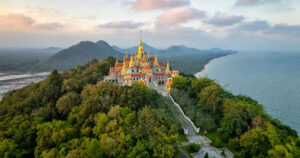Travel Photography Tips: Capturing Memories on the Road

Exhilarating experience in Traveling
Traveling is an exhilarating experience that allows us to explore new cultures, landscapes, and create lasting memories. One of the most powerful tools for preserving these memories is a camera. Travel photography enables us to capture the beauty and essence of the places we visit, the people we meet, and the moments we cherish. Whether you’re a seasoned photographer or an amateur looking to improve your travel photography skills, this comprehensive guide will provide you with valuable tips and techniques to help you capture unforgettable memories on the road.
Plan Your Gear
Before embarking on your journey, it’s essential to plan your photography gear carefully. The right equipment can make a significant difference in the quality of your travel photos. Here’s a checklist of gear to consider:
a. Camera: Choose a camera that suits your skill level and budget. A DSLR or mirrorless camera offers greater flexibility and control, but a high-quality compact camera or smartphone can also produce excellent results.
b. Lenses: If you’re using an interchangeable lens camera, bring a versatile zoom lens (e.g., 24-70mm) for general use and a wide-angle lens (e.g., 16-35mm) for landscapes and architecture.
c. Tripod: A lightweight and portable tripod can be indispensable for low-light situations, long exposures, and self-portraits.
d. Filters: Consider bringing a polarizing filter to reduce reflections and enhance colors or a neutral density filter for long-exposure shots.
e. Spare batteries and memory cards: Ensure you have enough power and storage capacity to last throughout your journey.
f. Cleaning kit: Dust and dirt can be a problem when traveling. Carry a cleaning kit to keep your gear in top condition.
g. Camera bag: Invest in a comfortable and protective camera bag to carry your gear securely.
Research and Plan Your Shots
Research and planning are crucial aspects of successful travel photography. Before you depart, learn about your destination’s culture, history, and iconic landmarks. Consider the following tips:
a. Create a shot list: Make a list of specific shots or locations you want to capture. This will help you stay organized and ensure you don’t miss any must-see spots.
b. Golden hours: Plan to shoot during the golden hours – shortly after sunrise and just before sunset – for the most beautiful and flattering light.
c. Weather and seasons: Be aware of the local weather conditions and seasonal variations. Different seasons can dramatically affect the appearance of a place.
d. Cultural sensitivities: Research local customs and traditions to ensure you’re respectful when photographing people and places.
e. Local events and festivals: Check if there are any special events or festivals happening during your visit. These can provide excellent opportunities for unique and vibrant shots.
Master Composition Techniques
Composition is the art of arranging elements within the frame to create visually appealing and impactful images. Here are some essential composition techniques to keep in mind:
a. Rule of Thirds: Divide your frame into nine equal sections by placing two horizontal and two vertical lines. Position key elements along these lines or at their intersections to create a balanced and pleasing composition.
b. Leading Lines: Use natural or man-made lines, such as roads, rivers, or fences, to lead the viewer’s eye into the image and towards your subject.
c. Framing: Frame your subject with elements in the scene, such as arches, windows, or tree branches, to add depth and draw attention to the subject.
d. Symmetry and Patterns: Look for symmetry or repetitive patterns in architecture, nature, or everyday life. These can create striking and mesmerizing compositions.
e. Negative Space: Don’t overcrowd your frame; sometimes, negative space can be just as powerful as the main subject, allowing it to stand out.
f. Perspective: Experiment with different angles and viewpoints, such as shooting from a low angle or a high vantage point, to create unique and captivating images.
Understand Lighting
Light is the most critical element in photography, and mastering its use is essential for travel photography. Here are some tips on understanding and using light effectively:
a. Natural light: Whenever possible, rely on natural light. Soft, diffused light on overcast days can be ideal for capturing details and reducing harsh shadows.
b. Golden Hour: As mentioned earlier, shoot during the golden hours for warm, soft, and directional light that adds a magical quality to your photos.
c. Avoid harsh midday sun: Midday sun can create harsh shadows and overexposed areas. If you must shoot during this time, look for shaded areas or use a diffuser to soften the light.
d. Backlighting: Experiment with backlighting to create silhouettes or to add a dramatic flair to your photos. Use your camera’s exposure compensation to balance the exposure.
e. Artificial light: Learn how to work with artificial light sources, such as streetlights or neon signs, to create atmospheric night shots.
f. Golden Hour: As mentioned earlier, shoot during the golden hours for warm, soft, and directional light that adds a magical quality to your photos.
Capture Candid Moments
While landscapes and architecture are often the focal points of travel photography, don’t forget to capture candid moments and the essence of the places you visit. Candid photography can convey the true spirit of a destination and evoke emotions. Here’s how to do it:
a. Blend in: Try to blend in with the local culture and avoid drawing too much attention to yourself. This will help you capture authentic moments without disturbing the scene.
b. Be patient: Candid shots require patience. Observe your surroundings, anticipate moments, and be ready to click when the right moment unfolds.
c. Use a telephoto lens: A telephoto lens allows you to capture candid shots from a distance, giving you a more natural and unobtrusive perspective.
d. Focus on details: Pay attention to the small details, gestures, and expressions that tell a story and reveal the character of a place.
e. Engage with locals: Building rapport with the people you meet can lead to more relaxed and authentic portraits and candid shots.
Experiment with Different Styles
While it’s essential to have a consistent style in your photography, travel offers a fantastic opportunity to experiment with various styles and techniques. Here are some styles to consider:
a. Street Photography: Capture the hustle and bustle of city life, candid moments of people on the streets, and the unique atmosphere of urban environments.
b. Landscape Photography: Highlight the beauty of natural landscapes, from majestic mountains to serene beaches. Use techniques like long exposures for smooth water or cloud movement.
c. Portrait Photography: Connect with locals and capture their portraits to showcase the diversity of cultures you encounter.
d. Food Photography: Document the culinary delights of your travels, from street food to gourmet cuisine. Use close-ups and creative compositions to make the food look irresistible.
e. Night Photography: Experiment with capturing the magic of cities at night, including cityscapes, light trails, and starry skies.
f. Minimalism: Simplify your compositions to emphasize a single subject or element, creating clean and powerful images.
Post-Processing and Editing
Post-processing is an essential part of modern travel photography. Editing your photos can help enhance their visual impact and correct minor imperfections. Here are some editing tips:
a. Shoot in RAW: If your camera allows, shoot in RAW format to retain maximum image quality and flexibility during post-processing.
b. Use editing software: Learn to use photo editing software like Adobe Lightroom or Photoshop to adjust exposure, contrast, color balance, and sharpness.
c. Maintain a consistent style: Develop a signature editing style that reflects your vision and personality as a photographer.
d. Avoid over-editing: While editing can enhance your photos, be cautious not to over-process them, resulting in unrealistic or overly saturated images.
e. Backup your photos: Ensure that you have a reliable backup system for your photos to prevent loss during your travels.
Respect the Environment and People
Travel photography comes with ethical responsibilities. It’s essential to respect the environment, local customs, and the privacy of people you photograph. Here are some guidelines:
a. Ask for permission: When photographing people, especially in close-up portraits, ask for their permission first. Respect their wishes if they decline.
b. Be discreet: In certain cultural or religious settings, it’s best to be discreet and avoid intruding with your camera.
c. Leave no trace: Practice responsible tourism by leaving no trace of your presence and respecting nature and wildlife.
d. Follow local laws: Familiarize yourself with local photography laws and regulations, as some places may have restrictions on photography.
e. Engage with the community: Get to know the people and culture of the places you visit, and consider giving back to the communities that welcome you.
Tell a Story
Great travel photography goes beyond individual shots; it tells a story about your journey. Consider the narrative you want to convey through your images:
a. Create a visual diary: Document your entire journey, from the planning stages to your return home, to provide a comprehensive narrative.
b. Capture moments of connection: Showcase the interactions, friendships, and shared experiences that define your travels.
c. Show contrast and change: Highlight the differences between places and cultures, as well as how they evolve over time.
d. Include details and context: Use your photos to reveal the small details, traditions, and daily life that make a destination unique.
e. Edit your photo story: When sharing your travel experiences, curate your photos to create a compelling visual narrative that resonates with your audience.
Practice and Learn
Finally, remember that photography is an art that requires practice and continuous learning. Keep pushing your boundaries, experimenting with new techniques, and seeking inspiration from other photographers. Join photography workshops, online communities, and critique groups to gain feedback and improve your skills.
Conclusion
Travel photography is a wonderful way to document your adventures, share your experiences with others, and create lasting memories. By planning your gear, researching your destinations, mastering composition and lighting, and respecting ethical considerations, you can capture stunning and meaningful images that truly encapsulate the essence of your travels. So, pack your camera and embark on your next journey, ready to tell your unique travel story through the lens.







